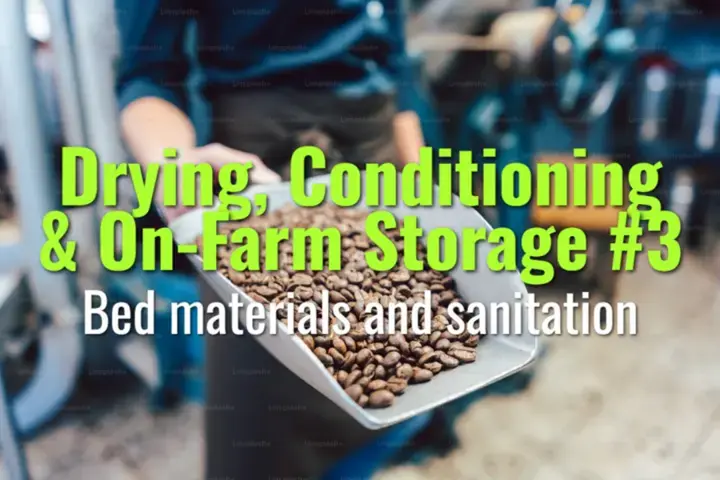Bed materials and sanitation
This topic explains the types of bed materials used in coffee drying, their advantages and disadvantages, and why sanitation is essential for preventing defects and ensuring quality.
- Coffee Basics Nerds
- 2 min read
Article 3 of 12 in Drying, Conditioning & On-Farm Storage/

Common Drying Bed Materials
1. Raised Beds with Mesh (African Beds)
- Constructed with wooden frames and mesh/netting.
- Allows airflow from above and below.
- Pros: Even drying, reduced mold risk, cleaner beans.
- Cons: Higher cost, requires maintenance.
2. Concrete or Clay Patios
- Large flat surfaces where coffee is spread thinly.
- Beans raked regularly for uniformity.
- Pros: Low cost, scalable, traditional method.
- Cons: Contact with dust/soil, risk of contamination, slower airflow.
3. Bamboo or Wooden Beds
- Common in smallholder systems.
- Locally available, lower cost.
- Pros: Affordable and accessible.
- Cons: Less durable, harder to sanitize, risk of microbial buildup.
4. Solar Drying Tunnels
- Transparent plastic/UV covers with ventilation.
- Can use mesh floors or trays inside.
- Pros: Protection from rain/humidity, faster drying, reduced contamination.
- Cons: Higher initial investment.
Sanitation in Drying Systems
- Why it matters: Beans are highly susceptible to microbial growth during drying.
- Risks of poor sanitation: Mold, phenolic defects, off-odors, reduced shelf life.
Sanitation Practices
- Clean drying beds and patios before each harvest.
- Remove old parchment, dust, or organic matter.
- Wash mesh/netting or apply sun/heat disinfection.
- Keep animals and pests away from drying areas.
- Store equipment (rakes, covers) in clean, dry spaces.
Quality & Safety Benefits
- Clean beds = clean cups with no earthy or baggy flavors.
- Improved buyer confidence and compliance with certifications.
- Longer shelf life and stability of green coffee.
Lasting Importance
Bed materials and sanitation are critical infrastructure decisions in coffee drying. Clean, well-maintained drying surfaces not only improve flavor outcomes but also protect farmer reputation in specialty markets by ensuring safe, defect-free lots.